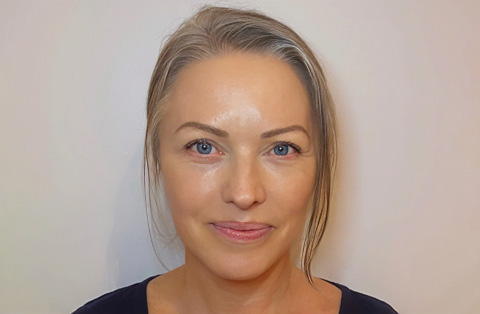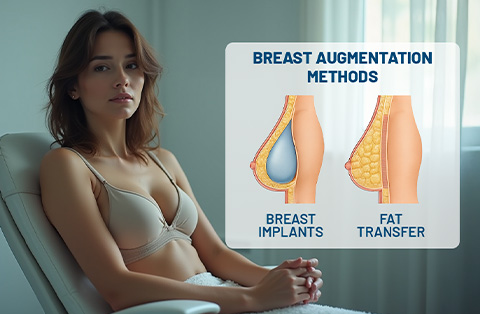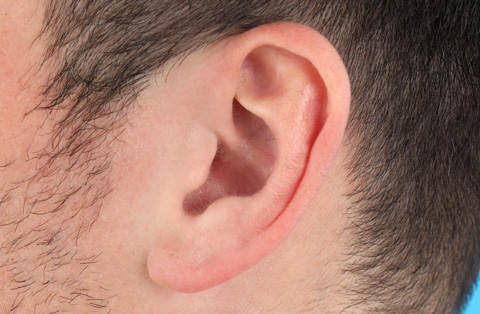Augmentation rhinoplasty restores height, shape, and support to the nose, offering a balanced profile and improved breathing for those with flat bridges, deformities, or structural collapse.
Augmentation rhinoplasty is a surgical procedure that enhances the height, projection, or support of the nose using implants or cartilage grafts.
It’s an important option for people with flat nasal bridges, collapsed structures, or deformities caused by trauma or previous surgery. Beyond improving facial harmony, it can also restore breathing function. Demand for augmentation rhinoplasty is growing worldwide, especially in regions where naturally low nasal bridges are common.
In this article, we’ll explain when augmentation rhinoplasty is necessary, how the surgery works, what materials are used, recovery expectations, potential risks, and why Türkiye has become a leading destination for affordable, world-class results.
What Is Augmentation Rhinoplasty?
Augmentation rhinoplasty is a type of rhinoplasty surgery that builds up or enlarges the nose rather than reducing it. It’s done to improve the height, projection, or definition of the nasal bridge or tip.
Surgeons can use:
- Implants (such as silicone or Gore-Tex)
- Cartilage grafts (taken from the septum, ear, or rib)
The procedure is common for patients with:
- A naturally low nasal bridge
- Flattened nose contours from trauma or previous surgery
- Structural weakness in the nose
It’s also used in dorsal augmentation, where the surgeon raises the bridge for better profile balance. Unlike standard rhinoplasty, which often focuses on reducing size, augmentation rhinoplasty aims to add structure and volume for improved symmetry and proportion.
How does augmentation improve the nose compared to reduction rhinoplasty?
Augmentation rhinoplasty improves the nose by adding structure, while reduction rhinoplasty reshapes by removing tissue.
In augmentation
- The surgeon builds up the nasal bridge or tip using implants or cartilage grafts.
- It increases height, projection, and definition.
- The goal is to correct flat or under-projected nasal features and create a more balanced profile.
In reduction rhinoplasty
- The surgeon removes bone or cartilage to reduce the size of the nose.
- It’s often used for large humps, wide bridges, or bulbous tips.
Augmentation is especially effective for low or flat bridges, collapsed nasal structures after trauma or previous surgery, and ethnic rhinoplasty cases where natural nasal height is lower.
Why might a patient choose augmentation instead of a standard rhinoplasty surgery?
A patient might choose augmentation when the goal is to enhance rather than reduce the nose. Common reasons include:
- Low or flat nasal bridge that needs more height for profile balance
- Under-projected nasal tip requiring better definition and forward projection
- Structural weakness needing reinforcement for function and shape
- Correction of deformities from trauma, infection, or previous surgery
- Ethnic rhinoplasty goals that preserve cultural features while improving contour
How Does It Differ From Standard Rhinoplasty?
Purpose
- Augmentation increases height, projection, and definition.
- Standard rhinoplasty often reduces size or reshapes without adding volume.
Technique
- Augmentation adds tissue or implants to build the bridge or tip.
- Standard rhinoplasty typically removes bone or cartilage to refine shape.
Materials Used
- Augmentation may use cartilage grafts (septum, ear, rib) or synthetic implants (silicone, Gore-Tex).
- Standard rhinoplasty relies on reshaping the patient’s existing framework without foreign materials.
When Is Augmentation Rhinoplasty Necessary?
It’s necessary when the nose lacks sufficient height, projection, or structural support for balanced facial proportions or proper function.
- Naturally low nasal bridge that makes the profile appear flat
- Collapsed structures from trauma, infection, or previous surgery
- Under-projected nasal tip lacking definition
- Congenital deformities such as cleft-related asymmetry
- Revision rhinoplasty to restore support and shape lost earlier
It’s also chosen for ethnic rhinoplasty when a patient wants to maintain natural features while enhancing bridge height or tip projection.
What nasal conditions require augmentation?
- Low or flat nasal bridge (congenital or ethnic)
- Saddle nose deformity from trauma, infection, or autoimmune disease
- Under-projected tip
- Septal collapse with cosmetic and breathing issues
- Post-surgical defects from over-reduction
- Cleft-related nasal asymmetry
Can augmentation correct trauma, congenital issues, or previous results?
Trauma-related deformities
- Restores height and alignment lost from fractures or tissue damage
- Reinforces weakened structures to improve shape and breathing
Congenital issues
- Corrects cleft-related asymmetry
- Enhances low or flat bridges present from birth
Previous nose surgery
- Rebuilds support after over-reduction
- Addresses collapse or irregularities from prior surgery
How Does Augmentation Rhinoplasty Surgery Work?
It adds structural support and volume using cartilage grafts or implants to achieve a balanced, stable, natural-looking profile while maintaining or improving breathing.
Main steps
- Anesthesia: General or local anesthesia with sedation
- Incision: At the columella (open) or inside the nostrils (closed)
- Pocket creation: Space prepared in the bridge or tip for the graft/implant
- Material placement: Cartilage (septum, ear, rib) or implant (silicone, Gore-Tex) shaped and positioned
- Shaping and refinement: Adjusted for symmetry, projection, and contour
- Closure: Incisions closed; splint may be applied
Augmenting with implants vs. cartilage
Implants
- Create a pocket along the bridge or tip
- Insert pre-shaped silicone or Gore-Tex
- Position and secure to prevent movement
Cartilage grafts
- Harvest from septum, ear, or rib
- Carve and shape to desired contour
- Place to add structure and definition
What is dorsal augmentation and when is it used?
Dorsal augmentation raises and reshapes the bridge to improve profile balance.
- Low or flat bridge (congenital or ethnic)
- Saddle nose deformity
- Loss of height after over-reduction
- Revision surgery to restore support and contour
What Are the Implant Options?
Synthetic implants
- Silicone: Smooth, stable, widely used; easy to remove
- Gore-Tex (ePTFE): Soft, porous, tissue integration
- Medpor (porous polyethylene): Firm, stable, used in complex cases
Autologous grafts
- Septal cartilage: First choice for small–moderate augmentations
- Ear cartilage: Curved/flexible; useful for tip work
- Rib cartilage: Large, strong grafts for major rebuilding
Silicone implants vs. cartilage grafts
Silicone implants
- Consistent shape, shorter surgery, easy to revise
- Higher risk of infection or movement; may feel less natural
Cartilage grafts
- Biocompatible, integrates, natural feel, lower rejection risk
- Requires harvesting; limited septal/ear supply; possible donor-site discomfort
Are synthetic implants safe long-term?
They can be safe when high-quality materials are used and placement is precise.
- Supports safety: Medical-grade materials, proper sizing/positioning, sterile technique
- Concerns: Infection (rare), shifting/contour issues, long-term skin thinning with oversized implants
Is Augmentation Rhinoplasty More Painful?
Not usually. Most discomfort stems from swelling/pressure; modern anesthesia and pain control help. Rib cartilage harvest can add chest soreness, and extensive reconstructions may increase tenderness.
How Long Do Results Last?
Cartilage grafts
- Usually permanent as the graft integrates
- Slight settling/aging changes may occur
Synthetic implants
- High-quality silicone, Gore-Tex, or Medpor can remain stable for decades
- Occasionally require replacement for shifting, thinning skin, or infection
Risks and Complications
- Infection
- Implant movement or extrusion
- Asymmetry
- Skin thinning
- Graft warping
- Breathing issues (rare)
- Scarring (usually minimal)
Can implants shift or cause infections?
Shifting
- Pocket too large or implant oversized
- Leads to asymmetry/irregular contours
Infection
- Early or late; linked to wound issues or contamination
- Severe cases may require removal
Warning signs of implant problems
- Persistent redness/swelling
- Worsening pain or tenderness
- Skin thinning/discoloration over implant
- Visible edges or irregular contours
- Shifting/asymmetry
- Drainage or foul odor
How to Prepare for Surgery
Medical preparation
- Full consultation and exam; imaging if needed
- Share medical history, medications, allergies
- Complete labs or screenings
Lifestyle adjustments
- Stop smoking ≥2 weeks pre-op
- Avoid alcohol just before surgery
- Hold blood thinners/supplements per doctor advice
Recovery planning
- Arrange transportation
- Prepare a comfortable recovery space
- Plan 1–2 weeks off, depending on healing
What to expect at consultation
- History review, breathing assessment, photographs
- Digital imaging/morphing as needed
- Discussion of cartilage vs. implants, risks, and expectations
- Incision plan, anesthesia, duration, recovery timeline
- Pre-op instructions and home care planning
How to choose a qualified surgeon
- Board certification and reputable memberships
- Portfolio of augmentation cases; experience with implants and grafts
- Clear communication on options, risks, recovery
- Accredited facility, robust safety protocols
Recovery After an Augmentation Nose Job
First week
- Swelling/bruising peak in 48 hours, then decline
- Splint or tape typically for ~1 week
- Mild–moderate discomfort (more if rib cartilage harvested)
Two to four weeks
- Most swelling subsides; return to work/social activity
- Avoid strenuous exercise and heavy lifting
Long-term healing
- Tip swelling may take 6–12 months to fully resolve
- Implants/grafts settle and refine contour over time
How long does swelling last after dorsal augmentation?
Most visible swelling improves within 1–2 months; subtle swelling—especially at the tip—can take 6–12 months.
When can patients return to normal activities?
Light daily activities often resume within a week. Avoid strenuous exercise, heavy lifting, and contact sports for 4–6 weeks. Most patients are fully unrestricted by ~3 months.
How Much Does It Cost?
Costs vary by location, surgeon experience, and materials.
- United States: ~$8,000–$15,000
- United Kingdom: ~£6,000–£10,000
- Western Europe: ~€6,500–€12,000
- Türkiye: ~$3,000–$6,000
Türkiye’s affordability reflects lower operating costs and competitive private healthcare. Many clinics are internationally accredited and staffed by surgeons trained in Europe or the U.S.
What factors affect price?
- Surgeon’s expertise: experience, complex reconstructions
- Location: country, city, tourism hubs
- Technique/materials: rib/ear grafts, premium implants
- Facility/anesthesia fees: accredited centers, general anesthesia
- Case complexity: revision, trauma, congenital issues
- Aftercare: visits, meds, dressings
Is insurance coverage possible?
Often only for functional/reconstructive indications:
- Trauma repair
- Congenital deformities
- Breathing impairment from collapsed structures
- Post-surgical reconstruction
Cosmetic-only procedures are typically not covered. Expect documentation, photos/tests, and preauthorization.
Frequently Asked Questions
Is augmentation rhinoplasty permanent?
Usually yes—especially with cartilage grafts. High-quality implants can last decades, though aging/trauma/complications may require adjustments.
What’s the difference between augmentation and reduction rhinoplasty?
Augmentation adds height, projection, or support (grafts/implants). Reduction removes bone or cartilage to make the nose smaller or refine shape.
Can rhinoplasty affect smell or taste?
Temporary changes can occur due to internal swelling and typically improve within weeks to months. Permanent changes are rare with experienced surgeons.






